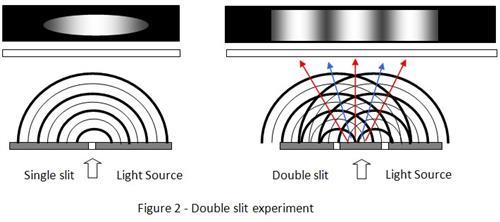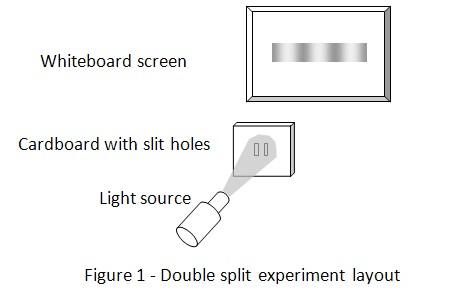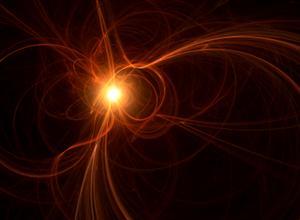Hypothesis
The double slit experiment will prove that light has the properties of waveforms.
Overview
Dual nature of light
Light has the ability to demonstrate the behavior of both particles and waveform. The double split experiment, also known as Young’s experiment, demonstrates the wave-like behavior of light: where interference of light causes the formation of light and dark lines on a screen. Also, the particle properties of light can be demonstrated through photons. This wave-particle dual nature of light is studied under the field of quantum mechanics.
The waveform behavior of light enables us to understand the different colors of light around us. Electromagnetic rays from the sun consist of waveforms that have different frequencies and wavelengths. Each band of frequency in the visible light spectrum is seen as a different color.
Light is also known to exist as photon particles. These particles do not have a mass, are without electric charge and do not decay. Photons are carriers of electromagnetic force and are able to demonstrate the properties of both waves and particles.
Scientific Terms
Particles, waveform, Young's experiment, interference, quantum mechanics, electromagnetic, photon
Conclusion
The double slit experiment proves the wave properties of light.
Also consider
Vary the size of the slits. Do the patterns on the screen change?
Put pin holes into the cardboards. Make holes in different locations. How do the patterns on the screen change?
References
Double slit experiment - http://en.wikipedia.org/wiki/Double-slit_experiment
Photon - http://en.wikipedia.org/wiki/Photon
Wave-particle duality - http://en.wikipedia.org/wiki/Wave%E2%80%93particle_duality
Related videos
Hey there! Here are some awesome videos about this science project that we think you'll really like. They're not only super fun, but they'll also help you learn more about the science behind the project. So sit back, relax, and get ready to have some fun!!





